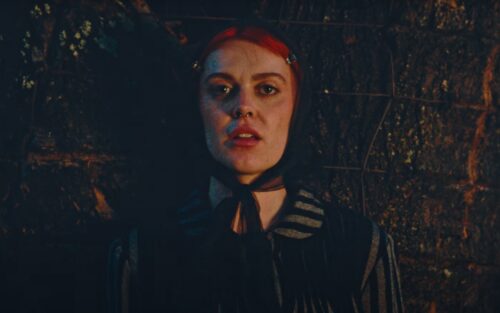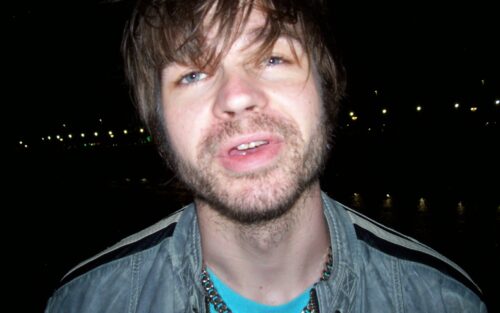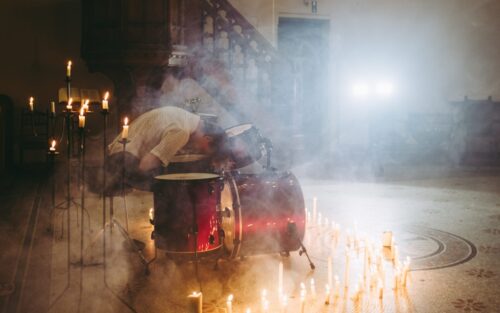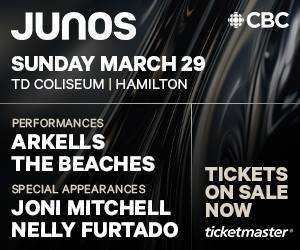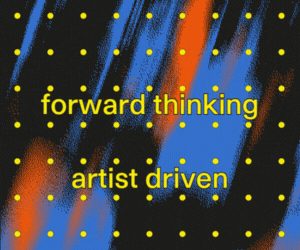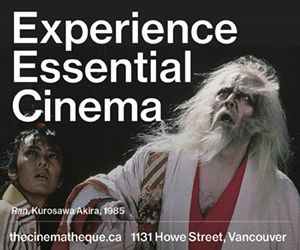Pink Mountaintops Take An Acid-Trip Dip Into Peacock Pools
Stephen McBean on covering Black Flag and living out his teenage dream writing thrash songs with the Melvins.
By Johnny Papan
Photo by Laura Pleasants
- Published on
“When I started I wasn’t planning to make an album,” McBean tells RANGE from one of the bedrooms inside of his 50s-style California rancher, the same room where the bulk of Pink Mountaintops’ Peacock Pools was written and recorded. “I got dropped by my label, which was kinda sad but also kinda liberating in a way. There was no pressure or deadline, I could just write whatever. An album kind of appeared when we had about five or six songs and I kept working on it.”
The process began with an edgy, industrial-meets-post-punk cover of Black Flag’s “Nervous Breakdown” which since its release has received positive recognition from former Black Flag and current Circle Jerks frontman Keith Morris. In a bold move, McBean opens Peacock Pools with this cover, an ode to some of the favourite artists of his youth.
“After a while I forgot it was a cover,” he chuckles. “It was the first song that I worked on so it kinda spawned the album. And then it was kind of like a historical thing, here’s a bunch of records I like that start with covers. Circle Jerks’ Wild in the Streets, Nick Cave’s From Her to Eternity…”


McBean tried to push his songwriting, guitar playing and recording to new levels on the record as well. He would watch YouTube tutorials on new home recording techniques and “noodle” on his guitar while watching videos of Miles Davis or Sun Ra, adding some jazz influence to his generally bluesy stoner-rock style.
“When you’re younger you write songs based on your favourite band at the moment,” he says. “So I would say ‘I wanna write a song that sounds like Void today,’ or Discharge or Slayer. Sometimes songwriting is really easy because you don’t think about it and you’re just watching TV and a line just pops up. Those are the most fun. But in this record there were certain moods I wanted to carry.”
This was the first album where most of the collaboration was done remotely, sending Dropbox files back and forth with the likes of Joshua Wells (Destroyer, Black Mountain), violinist/vocalist Laena Myers-Ionita (Feels, Death Valley Girls), drummer Ryan Jewell (Riley Walker, Steve Gunn), vocalist Emily Rose Epstein (Ty Segall, Emily Rose & The Rounders), and keyboardist Jeremy Schmidt (Black Mountain, Sinoia Caves). Some songs were recorded in studio with Melvins members Dale Crover and Steven MacDonald, including the standout thrash song “All This Death is Killing Me.” McBean called writing thrash songs with the Melvins a “teenage dream.”
Every song on the record has a distinct sound from one another, as the flow of the project moves from industrial to post-punk to stoner-rock to acoustic chillers and thrash metal. McBean took influence from a variety of topics as diverse as horror films, Disney sing-alongs and feminist bodybuilding essays, giving each track a stark lyrical and sonic contrast and making the record feel like a choose your own adventure acid-trip. With every listen, there is something new to discover and a new rabbit hole to dive into.
“The record is just a collection of things that were in my mind while I was around the house. I can spend a lot of time in my head,” he concludes. “For most artists you want to make a record that you want to hear. Something that’s different and takes you on a journey.”
By Stephan Boissonneault
Nate Amos revisits a decade of stray ideas and turns them into his most compelling record yet.
By Khagan Aslanov
Mike Wallace’s electro-punk project premieres the hypnotic, percussion-driven video for "Certain Days."

